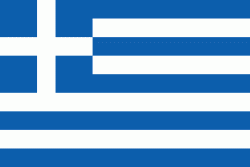Heraklion (Heraklion Regional Unit)
The regional unit of Heraklion borders on the regional units of Rethymno to the west and Lasithi to the east. Farmlands are situated in the central and the northern parts, at the coast and in valleys. The mountains dominate the rest of the regional unit, notably the south. The main mountains are parts of Ida or Idi Mountains to the west and Asterousia in the south. The regional unit includes the island of Dia to the north.
Except for the mountains which receive mild to cool winters unlike northern Greece, the warm to hot Mediterranean climate dominates the regional unit.
Map - Heraklion (Heraklion Regional Unit)
Map
Country - Greece
 |
 |
| Flag of Greece | |
Greece is considered the cradle of Western civilization, being the birthplace of democracy, Western philosophy, Western literature, historiography, political science, major scientific and mathematical principles, theatre and the Olympic Games. From the eighth century BC, the Greeks were organised into various independent city-states, known as poleis (singular polis), which spanned the Mediterranean and the Black Sea. Philip II of Macedon united most of present-day Greece in the fourth century BC, with his son Alexander the Great rapidly conquering much of the ancient world, from the eastern Mediterranean to the North Western parts of India. The subsequent Hellenistic period saw the height of Greek culture and influence in antiquity. Greece was annexed by Rome in the second century BC, becoming an integral part of the Roman Empire and its continuation, the Byzantine Empire, which was culturally and linguistically predominantly Greek.
Currency / Language
| ISO | Currency | Symbol | Significant figures |
|---|---|---|---|
| EUR | Euro | € | 2 |
| ISO | Language |
|---|---|
| EN | English language |
| FR | French language |
| EL | Greek language |















